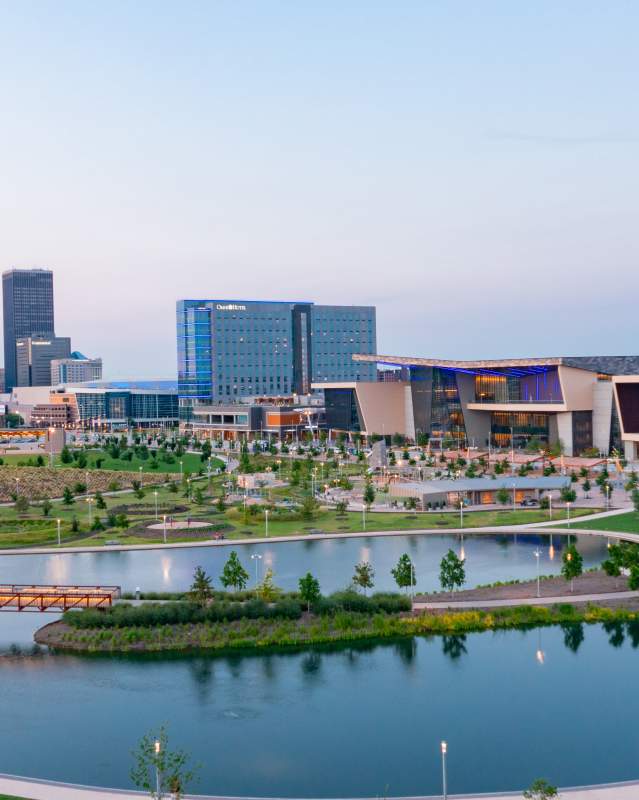The Oklahoma City Zoo and Botanical Garden is pleased to announce the birth of two critically endangered Guatemalan beaded lizards. It’s the second round of births for the species since coming to the Zoo in 2020, following the birth of four lizards in 2022.
“Guatemalan beaded lizards are considered one of the most endangered lizards in the world,” said OKC Zoo’s Curator of Herpetology Seamus Ehrhard. “They estimate there are about 200 still living in the wild.”
Finding an accurate number is difficult because the lizards are hard to find and hard to survey, he said.
“They’re a very shy species,” Ehrhard added. “If there was one in the room with you, the first thing it would do is hide.”
Visitors to the OKC Zoo can see some of these reclusive reptiles and dozens of other species in their habitats inside the Herpetarium. The four Guatemalan beaded lizards on public view are sub-adults from the 2022 clutch, while the adult mating pair and the most recent clutch stay behind the scenes, said Ehrhard. This brings the Zoo’s Guatemalan beaded lizard population to eight.
The Zoo will work with the Association of Zoos and Aquariums Species Survival Plan® to find the best matches to continue breeding with another facility's Guatemalan beaded lizards, ensuring genetic diversity and survival of the critically endangered species, Ehrhard said.
Guatemalan beaded lizards get their name from the black, bead-like scales on their bodies that extend from the head down to the tip of the tail. Scattered over the body are yellow spots and bands that provide its distinct coloration and pattern. Most closely related to the Gila monster, beaded lizards can live up to 60 years and grow to be about 2.5 to 3 feet long. These lizards are carnivores and eat young mammals, nestling birds, and the eggs of snakes, lizards and birds. The beaded lizard is one of the only venomous lizard species. Unlike other venomous species, beaded lizards have specialized grooved teeth that sit along the bottom jaw along with venom glands.
The lizards can breed about once a year in the spring and summer, producing a clutch of eggs ranging from two to eight offspring.
“They lay more eggs in human care because they have better access to resources and don't have to fear predators,” Ehrhard said.
The OKC Zoo partners with the Foundation for the Conservation of Endangered Species of Guatemala, or FUNDESGUA, to raise awareness for and protect the habitat of Guatemalan beaded lizards.
FUNDESGUA was formed in 2013 by Dr. Brad Lock, the Zoo’s Adjunct Coordinator of Guatemalan Conservation Programs, and is dedicated to using science-based strategies embedded in local culture to guide everyday actions for successful conservation results. Two of their target species are the Guatemalan beaded lizard and the Campbell’s alligator lizard. In remote areas of Guatemala, extreme poverty is common and access to amenities like electricity is rare. Thus, it is common to harvest wood used to cook and heat homes. To meet the needs of these communities and restore habitat for the lizards, FUNDESGUA supplies saplings for community-managed forests. Some of the provided trees are fast-growing, native eucalyptus and pine oak tree species that communities can harvest. Slower growing native trees are also provided. The communities care for these trees, which provide habitat for the lizards, and do not harvest them. This successful program has expanded to six forests, each with about 10,000 trees.
The Guatemalan beaded lizard, first discovered by scientists in 1984, is an isolated species found only in Guatemala’s Rio Motagua Valley. Due to their isolation in the dry, forest eco-type conditions of the Valley, deforestation poses a large threat to this species with only about 200 left in the wild. Guests can support the OKC Zoo’s conservation efforts by Rounding Up for Conservation. Every time someone purchases an admission ticket, food or souvenir, they can ask about “rounding up” their total to the nearest dollar to directly and positively impact wildlife and wild places.
The Oklahoma City Zoo is open 9 a.m. to 5 p.m. daily with the last entry no later than 4 p.m. Continuing through Labor Day, Monday, September 2, the Zoo is open daily at 8:30 a.m. for ZOOfriends with current memberships. Purchase advance Zoo admission tickets at okczoo.org/tickets and avoid the entry lines. Located at the crossroads of I-44 and I-35, the OKC Zoo is a proud member of the Association of Zoos and Aquariums, the American Alliance of Museums, and Oklahoma City’s Adventure District. Zoo admission is $16 for adults and $13 for children ages 3-11 and seniors ages 65 and over. Children two and under are admitted free.
Become a ZOOfriends member of the Oklahoma City Zoo and enjoy free admission all year-long, plus many additional benefits and discounts. You will also be supporting the Zoo’s animal family, education programming and conservation initiatives both locally and globally. Join or renew today at www.okczoo.org/membership.
Stay connected with the Zoo on Facebook, X, Instagram, Linktree and TikTok, and by visiting our blog stories. To learn more about Zoo happenings, call (405) 424-3344 or visit okczoo.org.






